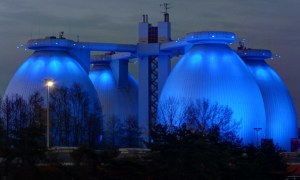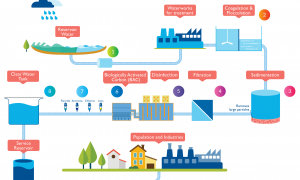🕑 Reading time: 1 minute
The primary purpose of dams is for storage and safe retention of water in large quantity which is subsequently released to achieve various purposes such as irrigation, hydropower, recreation, water supply, flood prevention etc.
Contents:
8 Main Purposes of Dams
1. Irrigation
The primary and main purpose of constructing a dam is to store water and use it for irrigation. The World Commission of Dam estimates around 30-40% of irrigated land relies on dams. It is estimated that 60% of the food production that comes to the market is dependent on dam water for their irrigation.

The major irrigation projects, which are dependent on the dam, often help prevent the mitigation of rural people to the cities, while giving them a higher standard of living in their native areas.
2. Hydropower Generation
Hydropower is considered the largest renewable energy source of electricity and clean because it does not contribute to global warming, air pollution, acid rain, or ozone depletion.

Hydropower generated by the dams is the most plentiful and most efficient renewable energy resource, contributing to 24% of all renewable electric energy produced all over the world. The Itaipu Dam on the Parana River in South America generates 14 GW and supplied 93% of the energy consumed by Paraguay and 20% of that consumed by Brazil as of 2005.
3. Flood Prevention
Flood control is a significant purpose for many of the existing dams and continues as the main purpose for some of the major dams of the world currently under construction. The dams are used to effectively regulate the level of water flowing in the river by temporarily storing the flood volume and releasing it later.

Every dam has an integrated water management plan for regulating the storage and discharge of water into the river basin without damage. This plan helps to impound floodwaters and then either release them under control to the river below the dam or store or divert the water for other uses. This strategy eliminates flooding which prevents the loss of life and property.
4. Water Supply
Dams play an important role in the water supply for domestic and industrial use. Dams store the water and supply it during the shortage of times.
The major percentage of rainfall precipitates on the ocean and the rainfall on the earth is wasted as runoff, a mere 2% of infiltrated to replenish the groundwater. So properly planned and designed dams can store contribute significantly toward fulfilling our water supply requirements.
Dams just not only serve as an irrigational lifeline, but also provide inland navigation throughout the heartland of the nation. The advantages of inland navigation, however, when compared with highway and rail are the large load-carrying capacity of each barge, the ability to handle cargo with large-dimensions and fuel savings.

Enhanced inland navigation is a result of comprehensive basin planning and development utilizing dams, locks, and reservoirs which are regulated to provide a vital role in realizing regional and national economic benefits.
6. Recreation
Dams provide prime recreational facilities such as boating, skiing, camping, picnic areas, and boat launch facilities are all supported by dams. The large water stored due to the construction of dams facilitates the growth of flora and fauna in the region due to which many recreational activities such as natural history, bird watching, landscape painting, walking, and hiking are on the rise.

7. Mine Tailing
A mine tailing dam is usually constructed by earth-filled embankment for the purpose of storing byproducts of mining operations. Tailings can be liquid, solid, or a slurry of fine particles, and are usually highly toxic and potentially radioactive.

The mines of copper, coal, gold, and uranium produce many kinds of waste, much of it toxic by-products which pose varied challenges for long-term containment of the environment. To mitigate this challenge, tailing dams are constructed to contain the effects of these harmful by-products.
8. Other Purposes
The purposes of dams are grouped into two categories, single-purpose and multipurpose. But maximum dams constructed are of multipurpose having one major purpose such as hydropower generation or irrigation and secondary purpose as recreation, flood control, waste management, river navigation, and wildlife habitat.
The other purposes served by the dams are-
- The storage of water in the dams facilitates the infiltration of water into the ground thus rechanging the underground water resources.
- Dams help in development of the overall socio-economic of the people in the region.
Read More:
21 Types of Dams in Construction
Common Causes of Failures of Dam Structures



